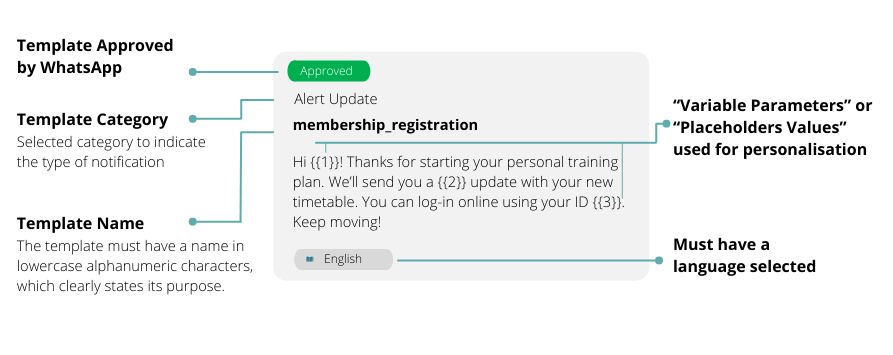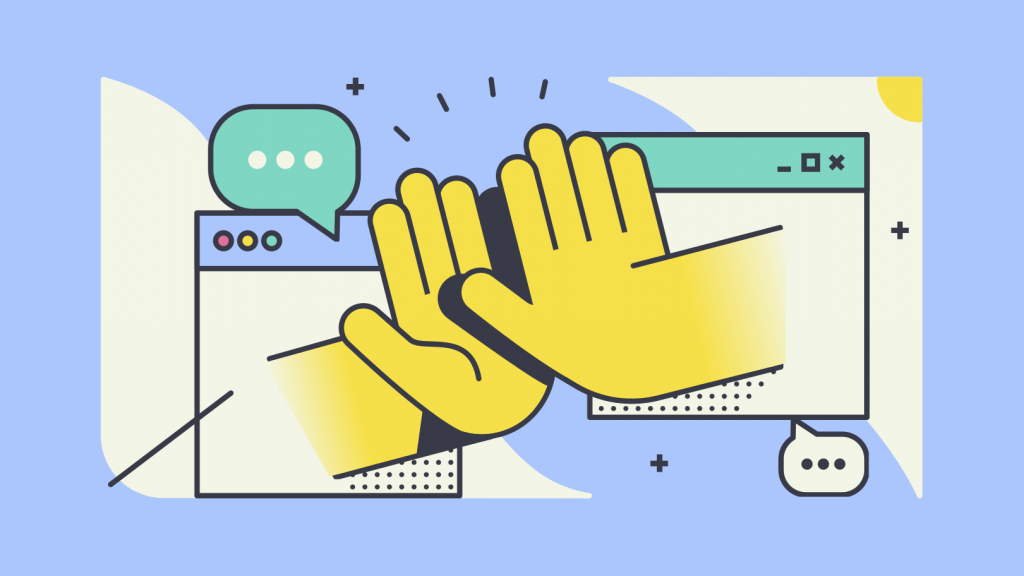Before we look at tips on creating good WhatsApp Message Templates, let’s have a quick refresher on the types of messages – and the rules that make it different from the other messages you can send using the WhatsApp API.
Basically, there are two types of messages you can send to customers via the WhatsApp Business API integration:
Session messages:
A Session Message is the message sent when a customer sends a message first. The session is valid till 24 hours from the customer’s last message sent. WhatsApp do not allow businesses to send messages anytime they want. To prevent spam and ensure prompt businesses reply, WhatsApp have applied the 24 hours messaging limitation.
Message templates:
If a customer does not start a conversation, and a business sends a message first, it is called a template message. Template messages are used when you want to send notifications to users or reconnect with them more than 24 hours after their last message to you. Template Messages must be approved before sending them.
Template Message overview
WhatsApp Templates are used to send outbound messages to users that have opted-in to receiving messages, but have not responded to you in at least 24-hours. Templates are any notification-type messages i.e. appointment reminders, delivery alerts etc. Marketing/promotional templates are now also allowed in all countries. Most importantly, all templates must be submitted to WhatsApp and approved before it can be used.
What does a Template Message look like?
The WhatsApp Message Templates have specific requirement, such as customizable placeholders, and media headers. Your WhatsApp Template Message should be submitted as follows:
Name: membership_registration
Hi {{1}}! Thanks for starting your personal training plan. We’ll send you a {{2}} update with your new timetable. You can log-in online using your ID {{3}}. Keep moving!
And your customer will receive:
Hi Jess! Thanks for starting your personal training plan. We’ll send you a weekly update with your new timetable. You can log-in online using your ID 140373. Keep moving!

Message Rules
There are essentially two types of rules to consider; Content Rules and Formatting Rules.
Content Rules
WhatsApp has rules around the types of use cases and business verticals that are allowed to use WhatsApp for business messaging. For example:
- Adult content
- Alcohol, tobacco, drugs, or related products
- Animal health and sales
- Gambling
- Defence, weapons, ammunition, explosives, or related products
For a comprehensive list of allowed business verticals, see please click here to review the WhatsApp Commerce Policy.
Formatting Rules
WhatsApp is very specific about the structure and formatting of message templates, and following these basic guidelines will increase the chances of your templates being approved.
- Your template must have a clear, descriptive title name – and only include lowercase alphanumeric characters and underscores (For example: shipping_alert_1)
- Templates must have a specific purpose and be clear, concise and well-written. For example, placeholder values must be clear on what they represent.
- Message templates should be text-based, but may include special characters, numbers and emojis.
- Templates must not have any spelling/grammatical mistakes; those with major spelling or grammatical mistakes will be rejected. Minor punctuation or grammatical inconsistencies may be approved, but should be avoided.
- Templates should be as short as possible to get the necessary information across. The ‘body’ section should be within the 1024 character limit.
- Add the variable parameters (i.e. the bit of code that will pull in the user’s first name) carefully.
- Avoid shortened links such as bit.ly
What types of messages are supported as Template Messages?
- Account Update
- Alert Update
- Appointment Update
- Issue Resolution
- Payment Update
- Personal Finance Update
- Reservation Update
- Shipping Update
- Ticket Update
For more comprehensive reference information about message templates, please click here.
Following these basic guidelines will increase the chances of your templates being quickly approved, and will help ensure that your customers enjoy interacting with your business.

